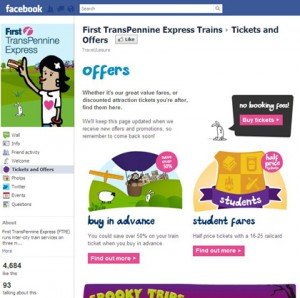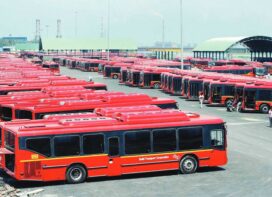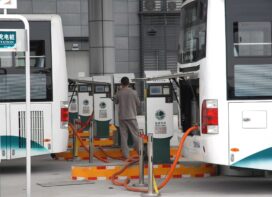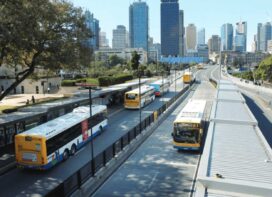This leads to another important aspect of UK public transport information; namely standards and protocols for data structure and data exchange, and automated systems and procedures for checking and verifying the accuracy of that data.
Two key elements of the data systems used by Transport Direct are the NPTG – National Public Transport Gazetteer (of places or ‘localities’) and the NaPTAN – the National Public Transport Access Nodes database which uniquely define not only all bus stops in the UK but potentially all other points of passenger access to the Public Transport network (including taxi ranks). These standards are closely linked to European standards and initiatives such as Transmodel and IFOPT (‘Identification of Fixed Objects In Public Transport‘) and are used in the UK’s process of defining bus services electronically, encapsulated in TransXChange – a national XML-based data standard for the interchange of bus route and timetable information between bus operators and others.
Real-Time Information
As the speed of society increases, so does the importance of having information in real-time. In the UK, two aspects of this are becoming increasingly important, and they are strongly related. These are: information about where public transport vehicles are at a given time and when they are likely to arrive at any particular point; and, secondly, having information while ‘on the go’.
Giving real-time information at places where people are waiting for public transport (e.g. bus stops and railway stations) has become increasingly important in the UK as has in-bus electronic information, including next-stop audio and visual messages, based on electronic intelligence of where the vehicle actually is, from GPS and other technologies. The system on buses in London is particularly impressive in this respect. However, in recent years the pressure to have real-time information on physical signs at bus stops has abated somewhat as the rise of the mobile phone and particularly the Smartphone (such as Apple’s iphone, phones with Google’s Android software, and BlackBerry) has meant that up-to-the-minute public transport information can be presented very effectively in a highly visual and user-friendly way.
Mobile Telephony for the public transport user on the go

The ‘Tickets and Offers’ page of the Facebook site of First TransPennine Express, a UK rail operator in the north of England
In addition to older and simpler technologies that are still widely-used such as SMS text messages, smartphones can access public transport information through mobile-enabled websites and through smartphone applications – several of which can give real-time information. The jury is still out on which technology is best, and indeed each can be appropriate for a particular purpose, but several public transport operators have both. Examples of this include Brighton & Hove Bus Company, Go North East, Arriva Bus and London Midland Trains. Some local authority public transport information websites also have mobile-enabled versions or smartphone applications: two that do are Intalink, for Hertfordshire, and Travel Bristol.
As operators and local authorities release their public transport data into the developer community, including releasing APIs – Application Programming Interfaces – new public transport information applications are produced. There are currently about 40 separate iphone applications for public transport in London and about 20 for parts of the UK rail network.
Social Media
The Public Transport Industry in the UK is also active in employing social media, such as Facebook and Twitter, to build a community of ‘supporters’ and to give timely information about service disruptions and provide speedy response to enquiries. Go-Ahead and First, two of the UK’s major bus groups, are making large advances in this area while Stagecoach is also actively experimenting with it. Both Facebook and Twitter really came into their own during the severe weather of winter 2010/11: The north-east England operator Go North East was particularly innovative there.
Facebook and Twitter
Nottingham City Transport, with nearly 18,000 ‘likes’, has on its ‘Wall’ (the main page on a Facebook site) a mix of service information for users, timely promotional postings and material designed to appeal to local residents familiar with the site of their brightly-painted buses.
The information page gives a brief history of the operator, and shows clearly the normal opening hours during which the Facebook site is updated. The photos page is quite extensive but of particular interest is the videos page which has attractive videos promoting their various ticket products, their night buses, and safe travel by bus.
Nottingham City Transport uses Twitter not only to give short timely information on service disruptions but also to respond quickly to specific queries from customers by sending ‘direct tweets’ to them. They also ‘retweet’ some tweets from other organisations which give general local information and from venues which are potential destinations for Nottingham City Transport customers (such as the Nottingham Playhouse).
Business Models
Finally, Public Transport Information in the UK reflects business models that seek to reduce costs while increasing sales. For instance, tying in ticket sales and sales of ‘extras’ such as catering with information on train times; and seeking to reduce costs by investigating the merger of the different Traveline regions. As the availability of new travel information-related tools such as internet-based yield management has led to the development of new public transport products and brands such as Megabus, we can expect more innovation in public transport information in the future to lead to more opportunities to increase both profits and customer satisfaction.
 (John Austin is Managing Consultant of Austin Analytics, a transport consultancy specialising in Passenger Transport and Sustainable Transport; and a member of BRTuk. He is also Vice-Chair of the UK’s National Association of Taxi Users, and is Vice-Chair of Transport Associates’ Network, a group of independent consultants. He has worked in the public transport industry for over 20 years, developing concepts and practical strategies and influencing policy and decision-makers in a wide range of areas. He can be contacted at
(John Austin is Managing Consultant of Austin Analytics, a transport consultancy specialising in Passenger Transport and Sustainable Transport; and a member of BRTuk. He is also Vice-Chair of the UK’s National Association of Taxi Users, and is Vice-Chair of Transport Associates’ Network, a group of independent consultants. He has worked in the public transport industry for over 20 years, developing concepts and practical strategies and influencing policy and decision-makers in a wide range of areas. He can be contacted atjohn@analytics.co.uk)
 TrafficInfraTech Magazine Linking People Places & Progress
TrafficInfraTech Magazine Linking People Places & Progress



